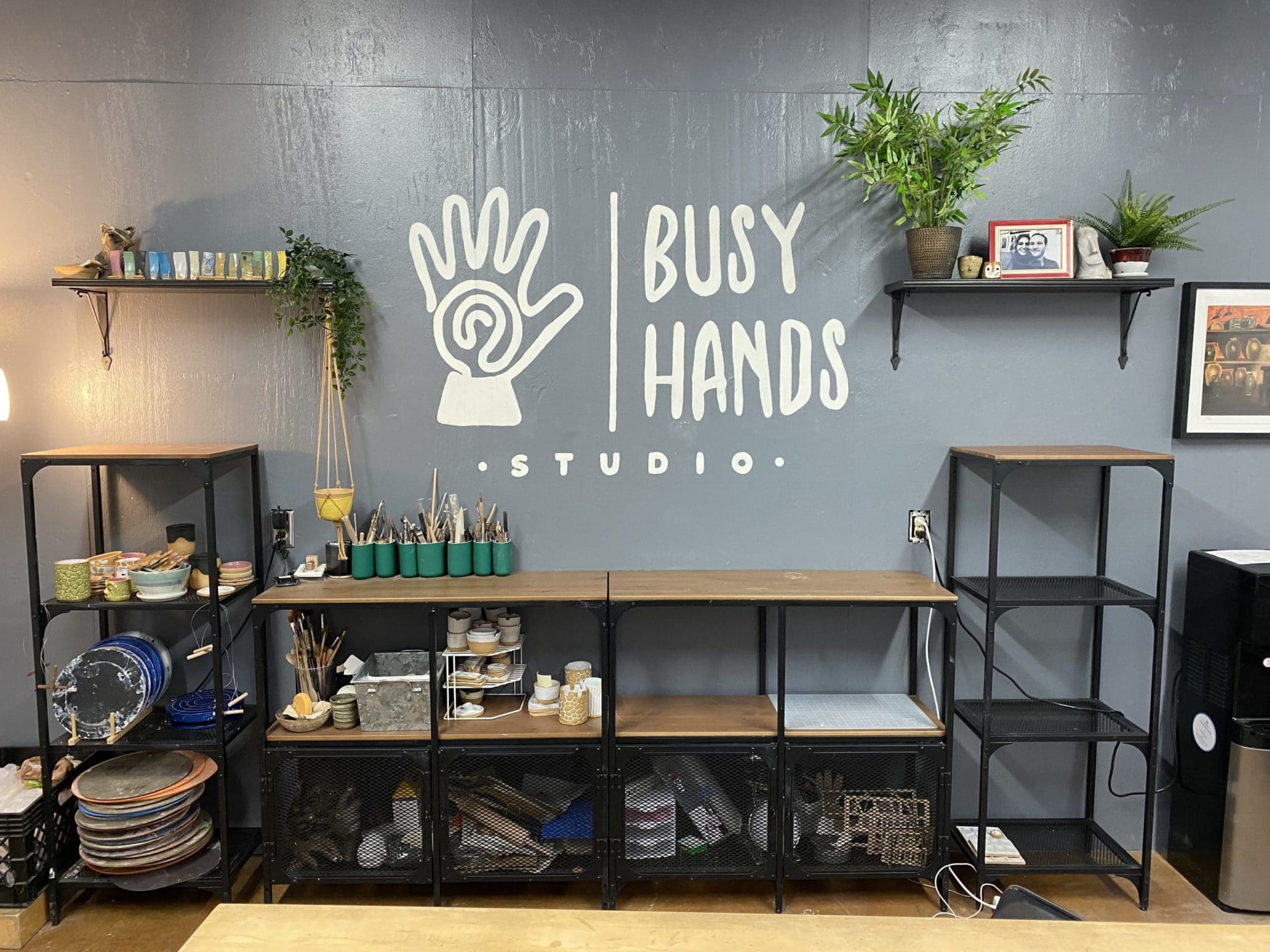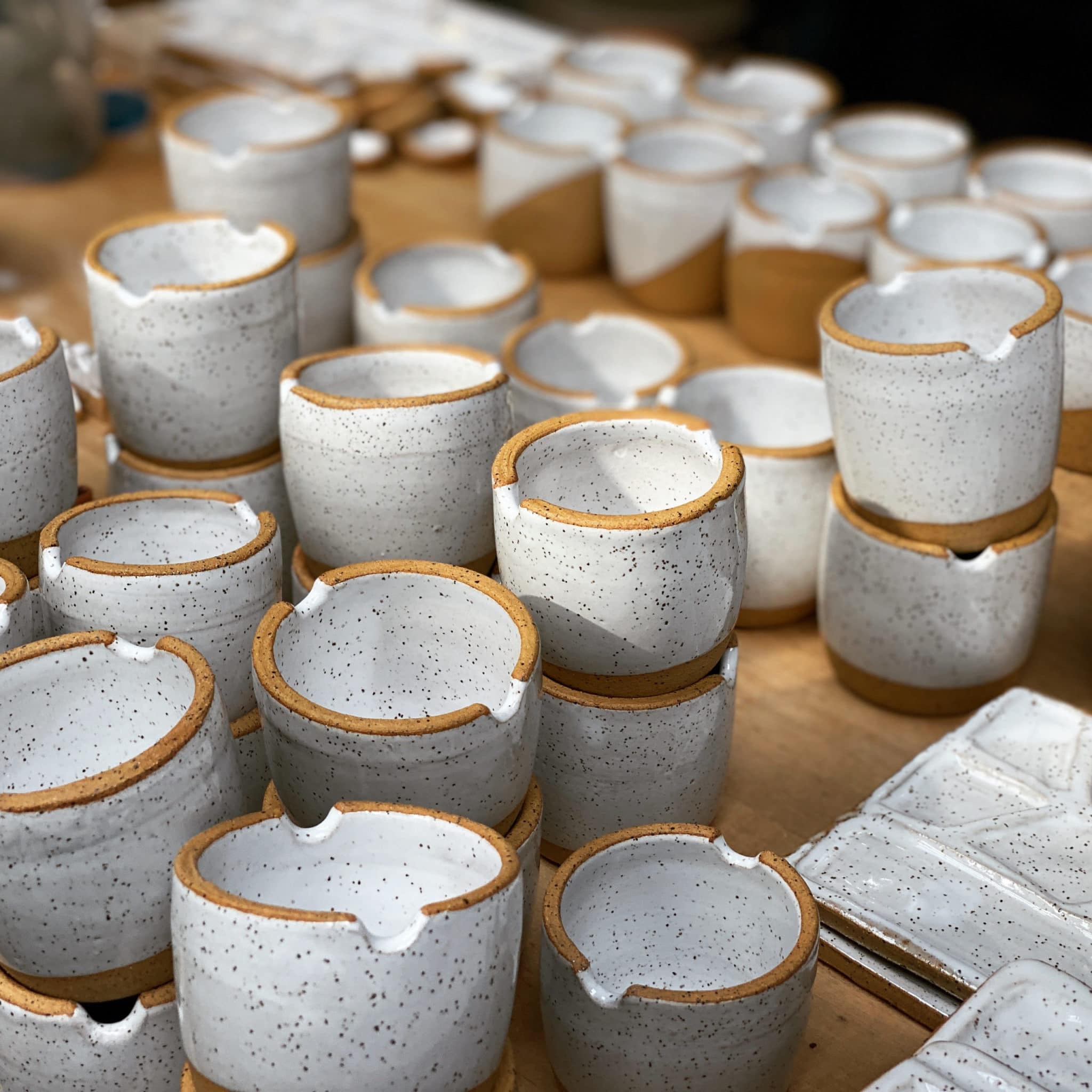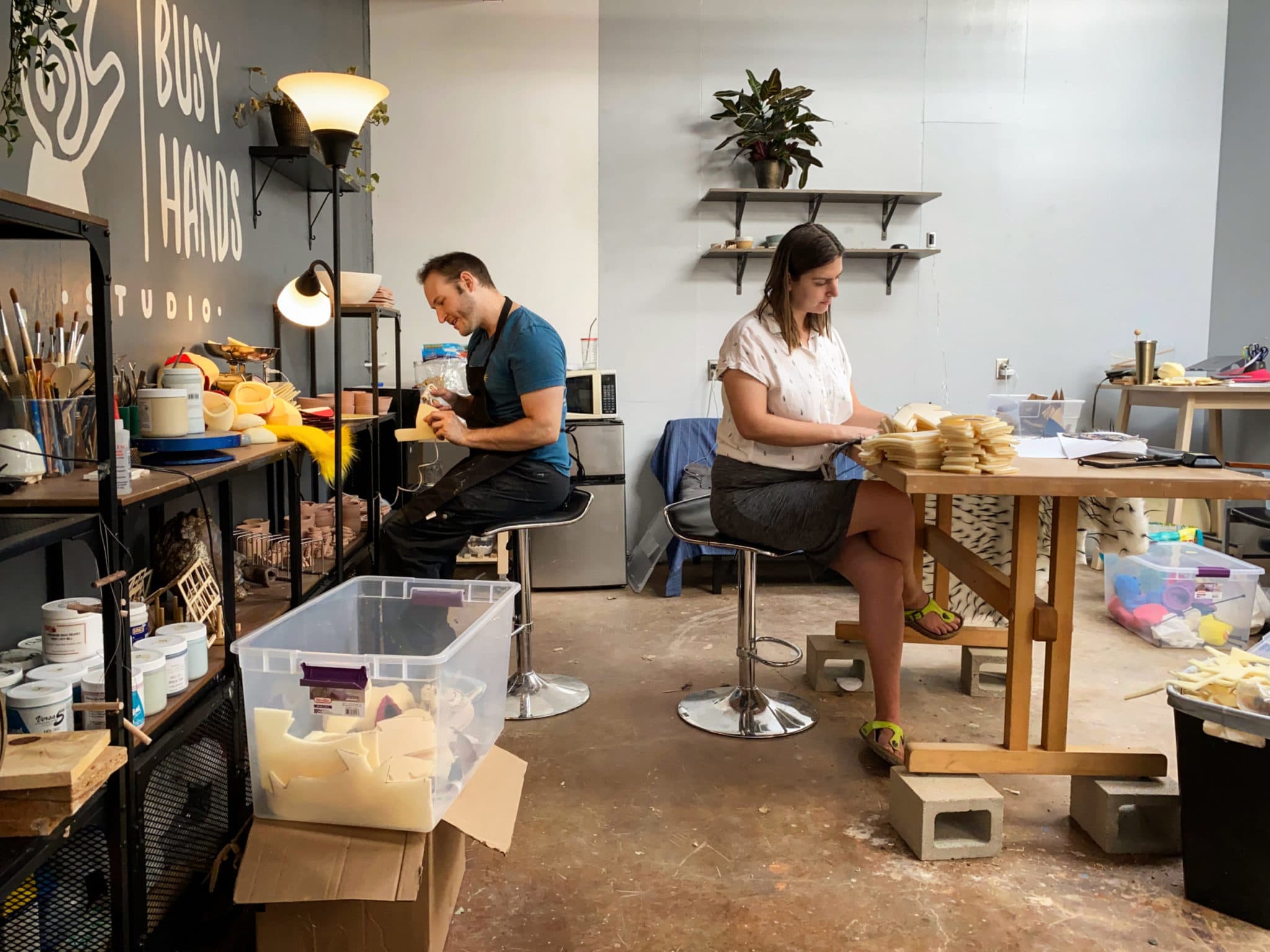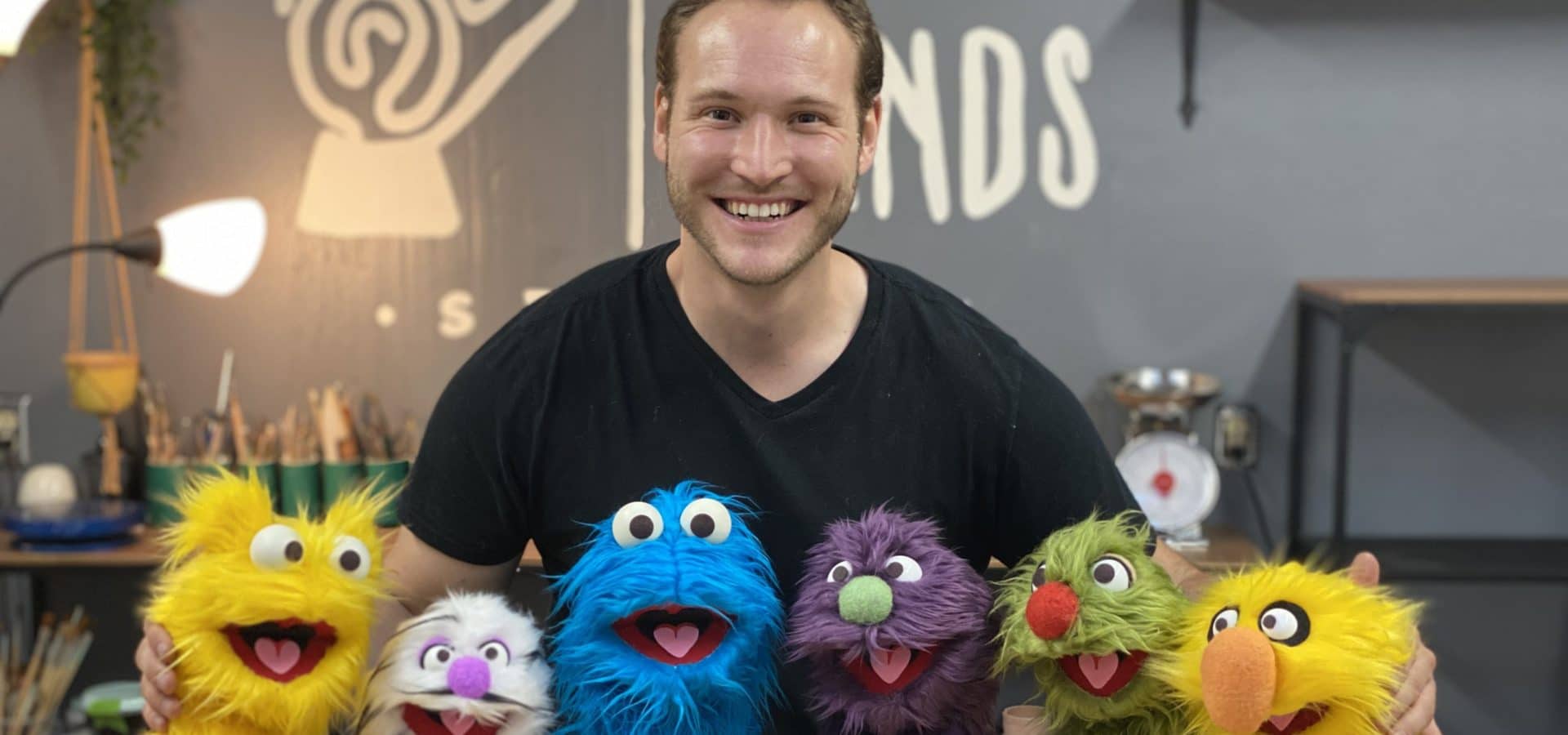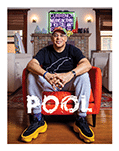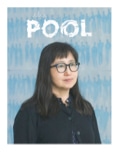Wrangling a bunch of 5- and 6-year-olds over Zoom may feel like an impossible feat, but teacher and artist Chase Woolner (Theater BFA 12) managed to keep his students’ attention using a time-tested method: puppets.
Not many kids get to take puppetry classes during their regular school day, but the children Woolner taught at Laurence School, a K-6 elementary school in the San Fernando Valley, have it as part of their regular curriculum. The medium is actually ideal for kids, Woolner told The Pool. It’s intrinsic for young children to make sense of their world through storytelling, and puppetry combines a little of everything—performance, design, and construction. Students gravitate toward the elements they love most, and “every kid gets to have success in puppetry because they are able to engage with it.”

Woolner himself became enraptured with puppets as a child. Following Jim Henson’s death in 1990, players and collaborators split off and developed their own pre-CGI puppet shows for Disney, Nickelodeon, and PBS. A young, puppet-obsessed Woolner saw it as a feast.
“Seeing that variety and growing up in downtown Chicago with the annual window displays, that’s what got me into telling stories with inanimate objects,” he said.
He began practicing puppetry at just 5 years old and joined the San Francisco Bay Area Puppeteers Guild at 8. In 2012, he graduated from CalArts with a BFA from the Theater School with a specialization in puppetry and apprenticed at the Jim Henson Company and Sesame Street. For the last decade, he’s worked with The Muppets and on several film, TV, theater, and commercial productions.
From 2015 until last month, Woolner served as Laurence School’s director of Technical Design and Enrichment. In a typical year, Woolner’s job meant overseeing a dozen annual performances, teaching scenic design and puppetry classes, and managing after-school programs. An appropriate amount of screen time was important to both staff and parents, so kids enjoyed an interactive curriculum.
But when the pandemic hit, the entire educational experience became tethered to a screen. Laurence students took livestreamed math and reading courses, then watched pre-recorded versions of their other classes. It’s here where Woolner’s entertainment experience came into play.
“What I love about teaching on Zoom is it’s kinda like having a TV show. You’re doing everything within this box,” he said. “What I’m trained in is television puppetry, [which is] exactly like teaching in a box.”
Woolner’s first assignment was a production of The Three Little Pigs. Each student was tasked with creating their own theater, plus their own puppets, to tell the well-trod fairytale. Because the class was pre-recorded, students would listen to Woolner’s guidance, then create the show on their own.
In the classroom, Woolner would have provided the students’ material. If a glue gun went awry, Wooler could fix it. With kids at home, it was a completely different ballgame.
“The classroom is a lot easier to control than a home experience, and there are a lot of different home experiences. As a puppeteer, you want to be able to control everything—that’s the whole thing. When you don’t have that, you’re trying to understand, ‘This is what I used to do. What am I really doing? How can I [make] this traditional experience into something that’s streamlined and accessible?'”
Woolner encouraged kids to work with whatever they had available, which resulted in a bloom of creativity. Some students used shoeboxes, while others created theaters large enough to climb inside. One student made a theater under their bed, another used a green blanket over his bed to simulate a swamp. Other kids decorated their theaters with marquees that read “Coming Soon” and “Playing Now,” stringing the proscenium in twinkling lights.
Puppets were equally eclectic, made from cups, toilet paper rolls, and even painted hands and fingers (which, Woolner noted, would have been hard to see IRL but not on Zoom). Some used stuffed animals they had already imbued with a personality, adapting that character for the fairytale. Some kids took creative freedoms with the story; one of the pigs was apparently half-pig, half-banana.
“In first grade and kindergarten, everyone knows the structure of The Three Little Pigs, so we’re not relearning a story to tell. What we are learning is how are we going to tell our version of it? What does our theater space look like? What do our pigs look like? It becomes a multidisciplinary thing,” he said.
Students were also encouraged to take advantage of an online theater’s assets, such as popping in and out of frame or rotating the camera so it looks like you’re hanging upside-down.
“You can play within the box in ways that you can’t in real life,” Woolner said. “For the older grades, if we’re recording, you have all of the skills of filmmaking at your fingertips. You can stop the camera and something can disappear. It’s a fantastic medium where we’re doing theater, but on film and in a live box.”
Over the summer, Woolner taught a different set of classes, including a weeklong theme park design course for grades 3-6. Students created their own lands and characters, some on paper and others in the video game Minecraft. Woolner brought in a Disney Imagineer to offer feedback. Imagine being 8 to 12 years old, and having a bona fide Imagineer evaluate your amusement park!
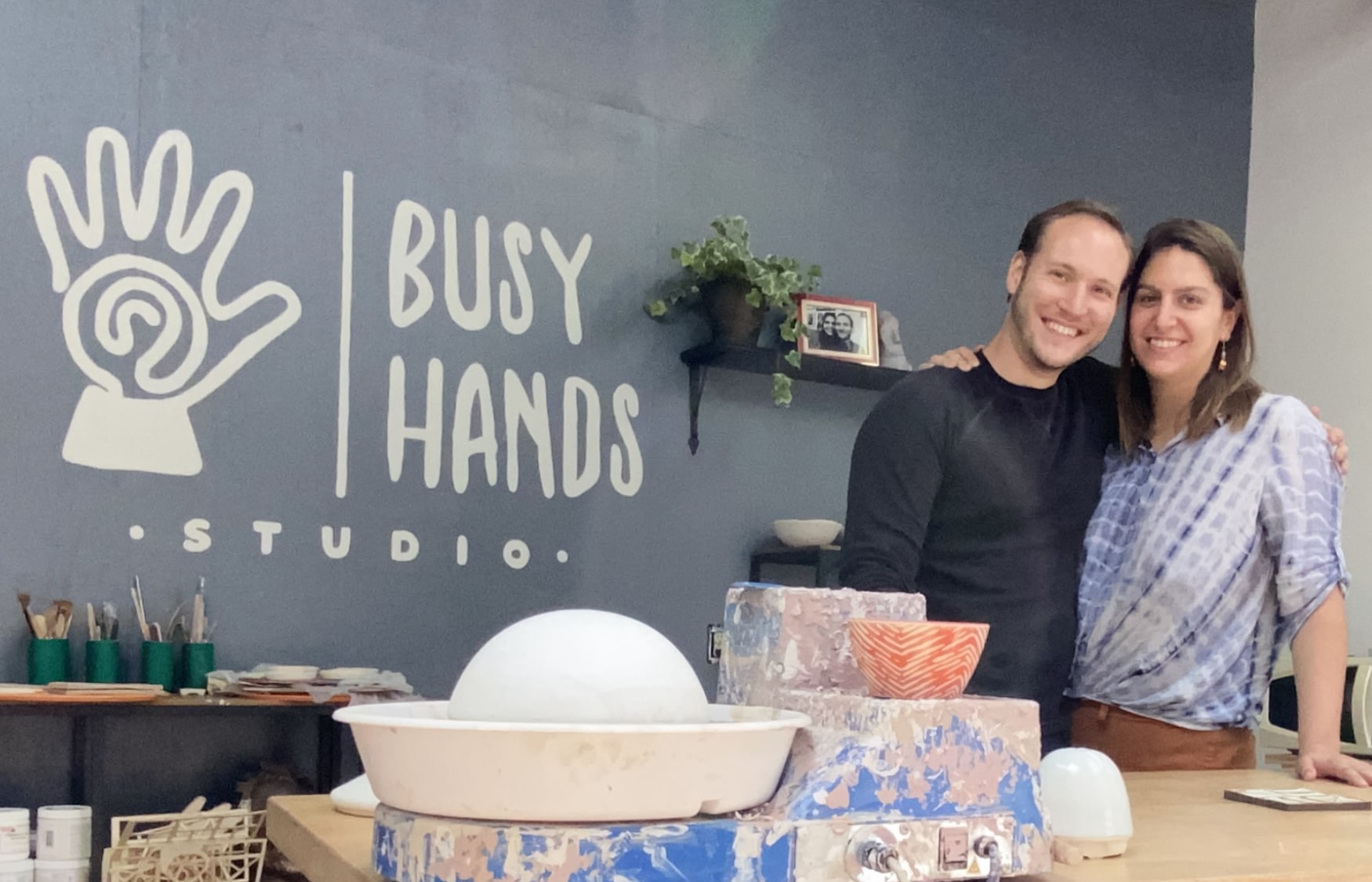
Another Artistic Outlet
When not teaching, Woolner worked on an emerging pottery business he started with his partner, teacher, and education consultant Sophie Meuch. They’d been taking classes since October 2019 and, in January 2020, started to get more serious about it.
“We’d both come from artistic backgrounds. Sculpting in clay is not very different from sculpting a puppet head, it’s just the finished product is different,” he said.
When schools went online-only, Meuch lost her job, and the couple decided to pivot and find an additional source of income, especially considering all the issues Californians were having navigating the state’s unemployment system. They decided to use their pottery know-how to start an Etsy store.
They started with “random cups and bowls and the occasional puppet.” Without access to their usual studio, they used a closet in their home—not ideal, they learned, when you have a curious cat. Eventually, they found a private studio in Ventura where they could not only create art without feline interruptions, but where Woolner could pre-record his classes.
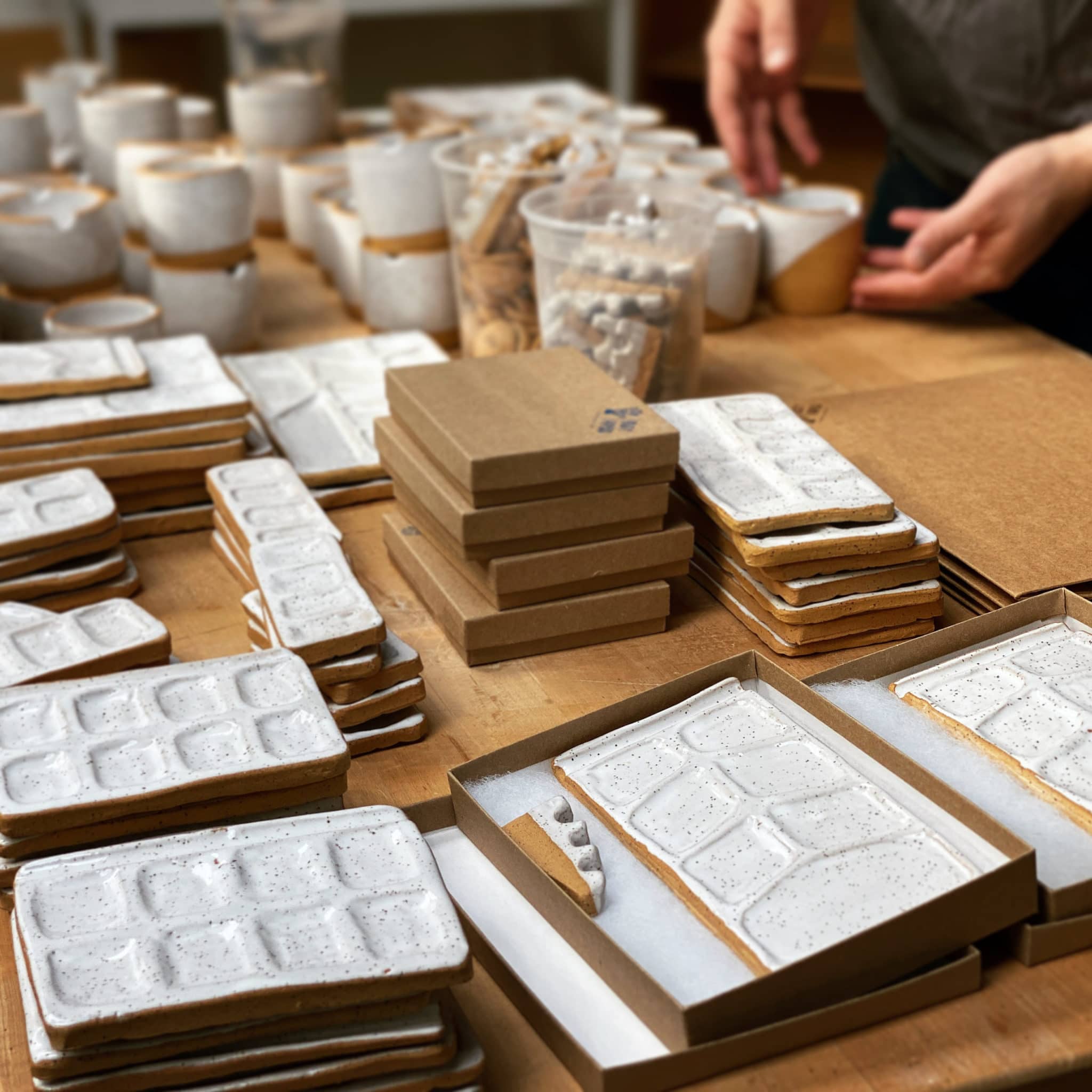
At one point, Meuch’s cousin asked if they could make her a ceramic paint palette. They did, and decided to make a few more. Palette gift sets, replete with a water cup and dish, were a hit. So far, they’ve sold 1,000 of them.
“I had no idea people wanted ceramic paint palettes. Going to CalArts, I just used a relish cap,” he said.
Now, Meuch and Woolner have two Etsy shops: Busy Hands Studio Goods for pottery and Busy Hands Studio Craft for puppets.
“I think this year had a lot of uncertainties, and there was a lot of trauma. Sophie and I were doing different pivots just to stay sane, you know. None of it was planned,” he said.
One of the biggest pivots? They’re moving from SoCal to Jackson, Mich., where they found a home that, serendipitously, already has a ceramics studio in it. They plan to work full-time as artists and teachers, and Woolner intends to use what he’s learned over the past year to offer online puppetry classes to a broader audience. On this life and career jump, Woolner says “[it’s] endlessly exciting.”
